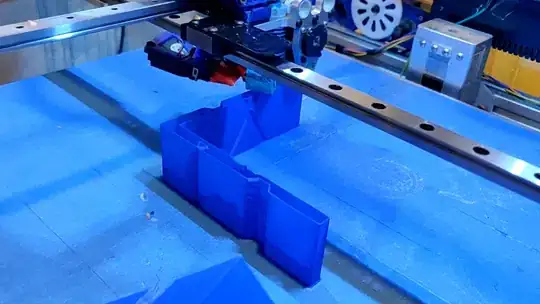Previous questions on the topic of setting acceleration are:
How to theoretically calculate the maximum acceleration? (theoretical calculation)
How do I determine the acceleration value for my printer? (how to find the maximum value, in general)
The topic of the test model to use to stress the printer has not been touched yet.
So, when I want to test experimentally a printer according to the link above to have it skip steps due to excessive acceleration, what features does a model need to have for this to work?
To the extent it may matter, in my case I have a CoreXY printer with Bowden setup, so the stresses on X and Y direction are relatively comparable, the difference is only the weight of the X rods and holder (150 g max).
The firmware I use provides this model to test ringing:
Would that be suitable to stress-test the skipping of steps or should I consider making my own, and if, what features should it have?
